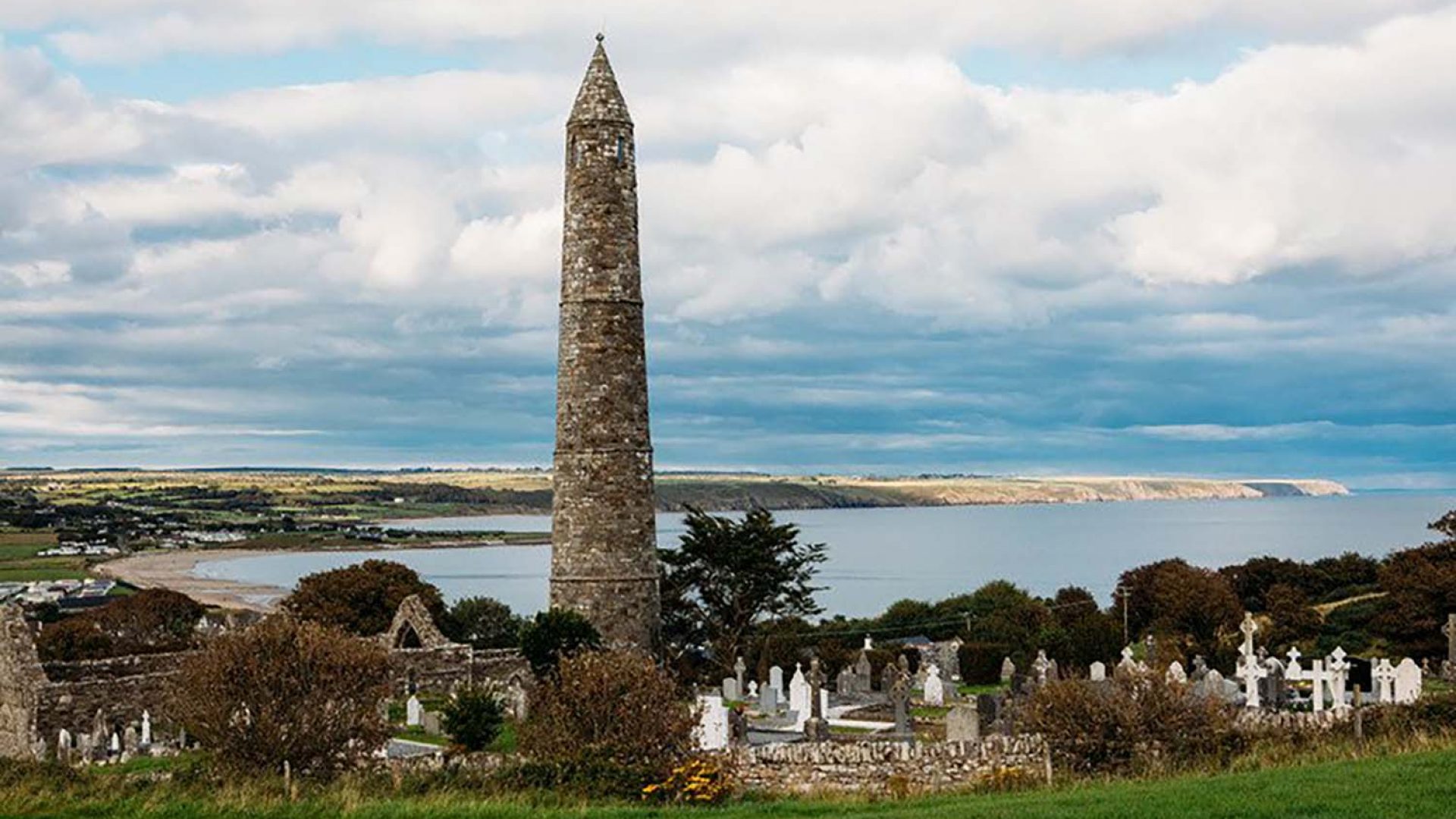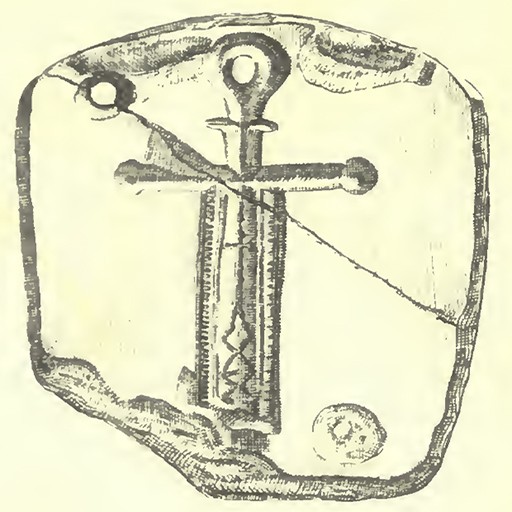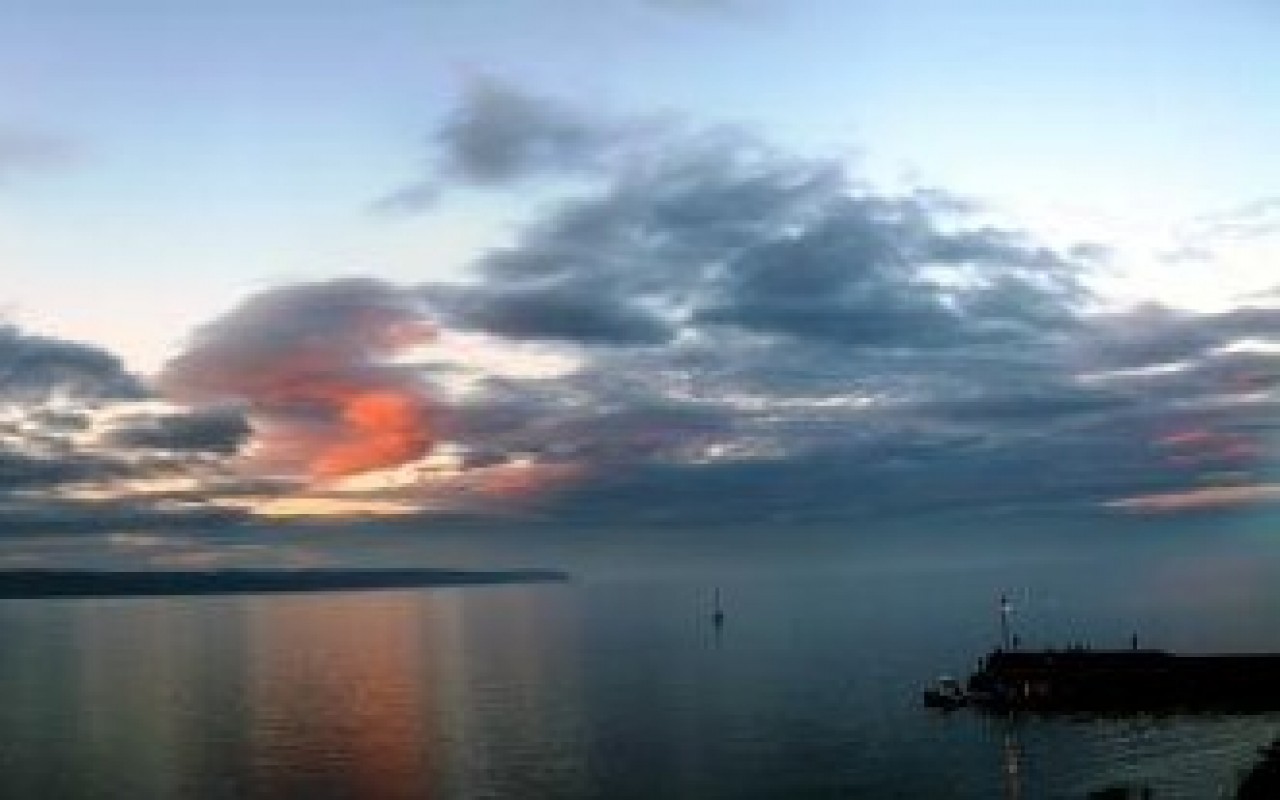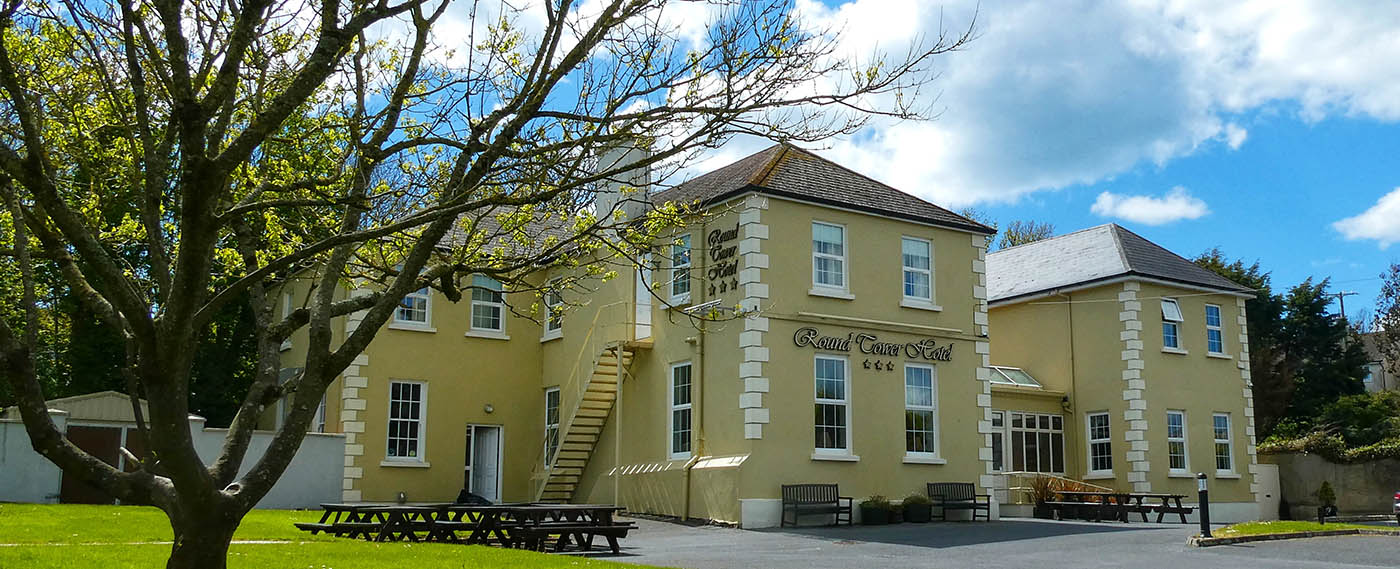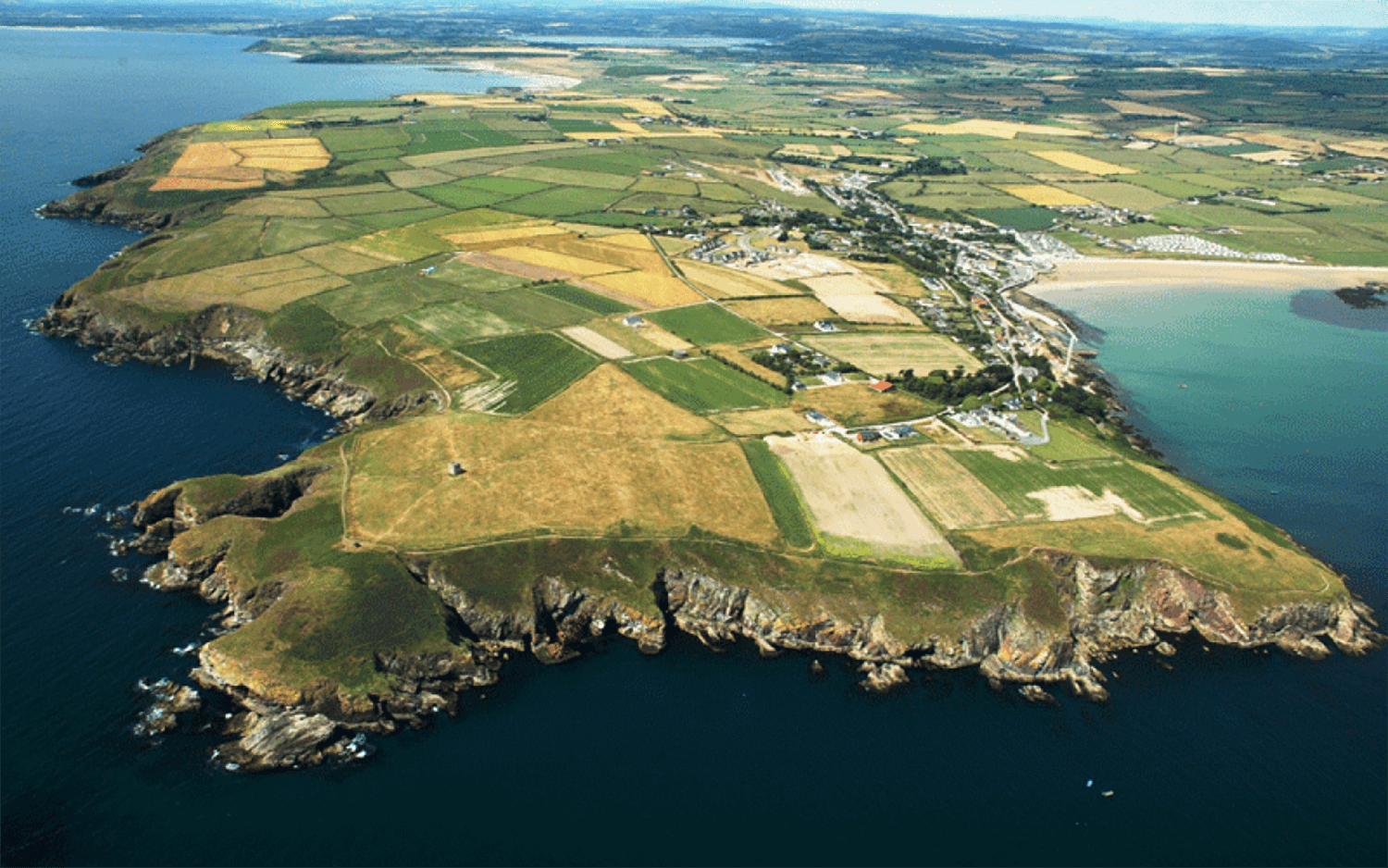Nestled along the stunning coastline of County Waterford, Ardmore is more than just a picturesque seaside village—it’s the cradle of Irish Christianity, where the remarkable story of St. Declan began. Dating back to the early 5th century, Ardmore holds the distinguished title of Ireland’s oldest Christian settlement, predating even St. Patrick’s arrival.
The Saint Who Changed Everything
St. Declan arrived in this region between 350-450 AD, establishing a monastery that would become a pivotal point in Ireland’s religious history. Unlike other missionaries, Declan brought Christianity to the area before St. Patrick, planting the seeds of faith that would transform the landscape of Irish spirituality.
Key Sites of St. Declan’s Legacy:
- St. Declan’s Monastery: Founded around 430 AD
- Round Tower: Standing 30 meters tall, one of the last built in Ireland
- Cathedral: Featuring 12th-century Romanesque architecture with stunning biblical stone carvings
- St. Declan’s Well: A site of pilgrimage and spiritual significance
A Village Steeped in History
Ardmore, whose name Aird Mhór means “great height” in Irish, has preserved its historical roots while embracing modern tourism. With a population of 468 as of the 2022 census, the village continues to honor its rich heritage.
Celebrating St. Declan’s Legacy
Every July 24th, Ardmore comes alive during Pattern Day, celebrating St. Declan’s feast day. The festival draws crowds from across Ireland, featuring music, entertainment, and a vibrant community spirit that echoes the saint’s original mission of bringing people together.
Why Ardmore Matters
In 2014, Fáilte Ireland recognized Ardmore’s significance by shortlisting it as one of Ireland’s top tourist towns. The village represents a living museum of Ireland’s ancient Christian heritage, offering visitors a unique glimpse into the country’s spiritual origins.
Conclusion
Ardmore is more than a destination—it’s a journey through time. Here, the spirit of St. Declan lives on, inviting travelers to explore the roots of Irish Christianity in a landscape that remains as magical and inspiring as it was over 1,500 years ago.
Come discover where Ireland’s spiritual story began—welcome to Ardmore!
Citations:
[1] https://kids.kiddle.co/Ardmore,_County_Waterford
[2] https://www.ardmorewaterford.com/a-little-introduction-to-ardmore-and-st-declan/
[3] https://en.wikipedia.org/wiki/Ardmore,_County_Waterford
[4] https://www.ardmorewaterford.com/irelands-ancient-east/
[5] https://www.ardmorewaterford.com/ardmore-1795/
[6] https://visitwaterford.com/cliff-walk-ardmore/
[7] https://www.dungarvantourism.com/ardmore/
[8] https://www.ardmorewaterford.com
A Little Introduction To Ardmore And St Declan
Ardmore is a picturesque village in County Waterford, Ireland, known for its rich history and religious significance. It is one of the earliest Christian settlements in Ireland, founded by St. Declan in the 5th century. The village features key historical landmarks, including St. Declan’s Monastery, a well-preserved round tower, and ogham stones. Ardmore also has stunning coastal scenery, including Ardmore Bay, making it a popular destination for both pilgrims and tourists. Its annual feast day for St. Declan draws visitors to celebrate his legacy.
St. Declan was an early Irish saint believed to have lived in the 5th century before the arrival of St. Patrick. He was a bishop and missionary known for bringing Christianity to the Déisi, a tribe around Ardmore, County Waterford. According to tradition, he founded a monastery at Ardmore and performed miracles, including the famous “Declan’s Stone”, which was said to float on water. St. Declan’s feast day is celebrated on July 24, and his legacy remains strong in the region.
St. Declan’s Monastery, located in Ardmore, County Waterford, Ireland, was founded around 430 AD by St. Declán. The site contains remains of a cathedral, a round tower, and ogham stones. The 12th-century Romanesque architecture includes carvings depicting biblical scenes, such as Adam and Eve and the Adoration of the Magi. The round tower, which is about 30 meters high, is one of the last built in Ireland. The site is a national monument with historical and religious significance.
St. Declan is credited with several miracles, the most famous being the “Miracle of Declan’s Stone.” According to legend, a large boulder miraculously floated across the sea to Ardmore, carrying a bell that Declan had left behind in Rome. This stone, known as “Declan’s Rock,” still exists near Ardmore and is believed to have healing powers, especially for those seeking cures for ailments. Another miracle attributed to him involved protecting his community from invading forces through prayer. His miracles reinforced his status as a revered saint in Ireland.
In addition to the “Miracle of Declan’s Stone,” other miracles attributed to St. Declan include:
- Restoring Life: Declan reportedly raised a young boy from the dead, cementing his reputation as an influential holy figure.
- Providing Water: He miraculously created a spring of fresh water at Ardmore when none was available for his community.
- Protection of Ardmore: Declan’s prayers were said to have saved the region from invaders on multiple occasions, demonstrating divine favor.
These miracles enhanced his veneration as a saint in Ireland.
Declan’s Rock, or “St. Declan’s Stone,” is located near the shore in Ardmore, County Waterford, Ireland. It is positioned at the base of a cliff, a large boulder associated with one of St. Declan’s most famous miracles. The rock is believed to have floated across the sea, carrying a bell back to Ardmore. Pilgrims often visit the site, especially during St. Declan’s feast day in July, as the stone is thought to have healing powers, particularly for curing ailments related to arthritis or rheumatism.
Many Ogham inscriptions are found on standing stones in Ardmore, across Ireland, and parts of Britain.
Ogham is an ancient Irish alphabet used primarily between the 4th and 7th centuries AD. It consists of a series of lines or notches carved along the edge of a stone or wood, each character representing a letter. The alphabet was used to write early Irish and sometimes mark ownership, land boundaries, or commemorate the dead. It holds significant historical and linguistic value in Celtic culture.
Near Ardmore, there are several attractions worth visiting:
- Ardmore Round Tower: A 12th-century, 30-meter tall structure offering panoramic views and historical insights.
- St. Declan’s Well: A sacred site believed to have healing properties.
- Ardmore Cliff Walk: A scenic 4 km trail along rugged cliffs with views of the Celtic Sea and ruins of an old coast guard station.
- Youghal: A nearby historic town with medieval walls, a clock gate, and Youghal Beach.
These sites blend history, nature, and spirituality.
The best time to visit Ardmore is during the summer, from June to August when the weather is mild and conducive to exploring scenic coastlines, historical sites, and outdoor activities. If you’re interested in local culture, visiting around St. Declan’s Feast Day on July 24 is ideal, as the village hosts religious pilgrimages and festivities. The shoulder seasons of spring (April-May) and early autumn (September) also offer pleasant weather with fewer crowds, making it a great time for quieter exploration.
If you’re planning a stay near Ardmore, some great accommodation options include:
- Cliff House Hotel: A luxury 5-star hotel offering stunning sea views and fine dining.
- Round Tower Hotel: A cozy, family-run hotel in the heart of Ardmore.
- Local B&Bs and Guesthouses: Several charming bed-and-breakfast options around the village offer a more personal touch.
Nearby towns like Youghal and Dungarvan offer additional options, from boutique hotels to self-catering cottages.
